Watch recordings of the latest in wildland fire science advancements & other topics
Find recordings of all our webinars on our You Tube Channel @swfirescience.
January 13, 2016: Effectiveness of Wildfire Mitigation Activities in the Wildland-Urban Interface (WUI)
Date: January 13, 2016Presenter: Zander Evans, Forest Guild Each year wildfires damage homes, businesses, communities, watersheds, and forests on millions of acres across the U.S. However there are effective ways to reduce the impact of wildfire. A new report, Evaluating…
February 17, 2016: Ecology of Smoke
Presenter: Mary Lata, USFS Fire Ecologist The Ecology of Smoke is something that has been considered by very few in the United States, despite extensive and intensive interest and research into frequent fire systems. This presentation will review some of the…
January 20, 2016: Biophysical Settings Review: What it is. How it works. Why it matters
Date: Wednesday January 20, 2016 12pm Mountain Presenter: Randy Swaty, The Nature Conservancy LANDFIRE Team All ecosystems are dynamic, changing due to growth, succession and disturbances. Modeling large landscapes in the United States requires the collective knowledge of experienced and knowledgeable vegetation…
December 16, 2015: Impacts of Thinning and Burning in Spotted Owl Habitat
Presenter: Quentin Hays, Eastern New Mexico University On forested lands throughout the Southwest, Mexican spotted owls (Strix occidentalis lucida) are a driver of management activities, as the current Recovery Plan (USFWS 2012) dictates forest treatment guidelines in designated owl habitat. These guidelines…
June 20, 2012: Fire Regime Condition Class Concepts
Presenter: Steve Barrett & Kathy Schon (NIFTT University of Idaho) Fire Regime Condition Class (FRCC) is an interagency, standardized tool for determining the degree of departure from reference condition vegetation structure and composition and fire regimes. FRCC metrics can help guide…
November 10, 2015: Mixed Conifer Forest Ecology: Emerging Science
This will be a panel presentation followed by a question/answer and discussion, approximately 90 minutes in length Assessing and analyzing mixed conifer spatial patterns of northern Arizona (Kyle Rodman) Effects of tree cutting and fire on understory vegetation in mixed conifer forests…
October 21, 2015: Local Ecological Knowledge and Fire Management: What Does the Public Understand?
Date: Wednesday, October 21, 2015 1pm MDT (12pm AZ) Presenters: John Diaz, North Carolina State University As fire management agencies seek to implement more flexible fire management strategies, local understanding and support for these strategies become increasingly important. One issue associated with…
August 26, 2015: Climate change and fire in the Southwest
Presenter: Larissa Yocom, Northern Arizona University Global climate change will lead to shifts in climate patterns and fire regimes in the Southwest over coming decades. The intent of this webinar is to summarize the current state of scientific knowledge about…
September 2015: Immediate post-wildfire effects on bats in the Southwest
Presenters: Erin Saunders Northern Arizona University and U.S. Forest Service, and Carol Chambers, Northern Arizona University Ponderosa pine forests in the southwestern U.S. have increased in density over the last 100 years which has dramatically increased the size and frequency of…
July 8, 2015: Connecting resilience science with decision-making: Guidelines for the effective development and application of scientific information
Presenter: Melanie Colavito, University of Arizona This webinar describes the results of a study that sought to identify barriers and opportunities to the use of scientific information about resilience for decision-making and on-the-ground management. Data for this study was collected…
May 12, 2015: The Southwest Fire Season: 2014 Overview and 2015 Outlook
Presenter: Zander Evans, Forest Guild and Chuck Maxwell, Predictive Services Please join us for a webinar to review last year’s fires and look ahead toward conditions for this year. Dr. Zander Evans will present an overview of the 12 largest fires…
April 15, 2015: Effects of climate variability and accelerated thinning on watershed-scale runoff in Southwestern ponderosa pine forests
Presenter: Marcos Robles, The Nature Conservancy The recent mortality of up to 20% of forests and woodlands in the southwestern United States, along with declining stream flows and projected future water shortages, heightens the need to understand how management practices…
April 2, 2015: Tamarisk invasion and fire in Southwestern desert ecosystems
Presenter: Gail Drus, St. Francis University Increased wildfire has been observed with the displacement of native cottonwood-willow (Salix and Populus spp.) gallery forests by invasive, non-native tamarisk (Tamarix spp.) in desert riparian zones of North America. Greater post-fire recovery of…
February 25, 2015: Fire and climate history of the western San Juan Mountains, Colorado: Integration of tree-ring and alluvial-sediment methods
Presenter: Erica Bigio, University of Arizona This webinar presents research on the historical fire regimes of the western San Juan Mountains in southwestern Colorado, where the landscape provided a unique opportunity to sample tree-ring and alluvial-sediment records in the same…
January 21, 2015: The Ability of Wildfire to Act as a Fuel Treatment
Presenter: Sean Parks, Aldo Leopold Wilderness Research Institute, Rocky Mountain Research Station, U.S. Forest Service In partnership with the Northern Rockies Fire Science Network, Sean will present the results from a JSFP-funded study that highlights the ability of wildfire to…

